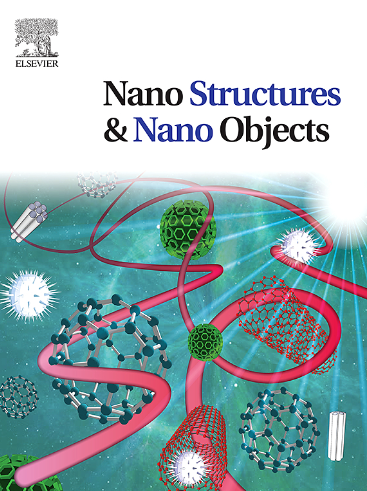Functionalized conducting polymers in photocatalysis and opportunities for artificial intelligence applications
IF 5.45
Q1 Physics and Astronomy
引用次数: 0
Abstract
Water systems are being polluted by emerging contaminants at a staggering rate of 500 million tons annually. Various techniques have approached the treatment of pollutants, with photocatalysis being a viable method. Current research delved into the functionalization and nanohybridization of conducting polymers through photocatalysis in the degradation of dyes, heavy metals, and other pollutants. This review investigated the recent advancements in using functionalized conducting polymers and their composites in removing contaminants and highlights their various environmental benefits. Conducting polymers integrate dopants and heterojunctions to optimize the performance, which can, in turn, reduce wastewater pollution. Conducting polymers play a role in hydrogen production and carbon dioxide (CO2) reduction. This review presented the role of artificial intelligence models in the optimization and prediction of degradation rates in photocatalytic processes. This review concludes that amongst the models reviewed, artificial neural networks and genetic algorithms appeared to achieve the most accurate results with an R-squared and error value of 0.998 and 1.83×10−4, respectively. Despite the progress achieved in this direction, various issues pertaining to the generalization of the experimental data to a larger scale persist. This exposes the challenges in designing well-optimized photocatalytic-membrane systems.
光催化中的功能化导电聚合物与人工智能应用机遇
水系统正以每年 5 亿吨的惊人速度受到新出现的污染物的污染。处理污染物的技术多种多样,其中光催化技术是一种可行的方法。目前的研究深入探讨了通过光催化对导电聚合物进行功能化和纳米杂化,以降解染料、重金属和其他污染物。本综述探讨了使用功能化导电聚合物及其复合材料去除污染物的最新进展,并重点介绍了它们的各种环境效益。导电聚合物集成了掺杂剂和异质结,可优化性能,进而减少废水污染。导电聚合物在制氢和减少二氧化碳(CO2)方面发挥着作用。本综述介绍了人工智能模型在优化和预测光催化过程降解率方面的作用。综述得出的结论是,在所综述的模型中,人工神经网络和遗传算法似乎取得了最准确的结果,其 R 平方和误差值分别为 0.998 和 1.83×10-4。尽管在这方面取得了进展,但在将实验数据推广到更大规模方面仍然存在各种问题。这暴露了设计优化的光催化膜系统所面临的挑战。
本文章由计算机程序翻译,如有差异,请以英文原文为准。
求助全文
约1分钟内获得全文
求助全文
来源期刊

Nano-Structures & Nano-Objects
Physics and Astronomy-Condensed Matter Physics
CiteScore
9.20
自引率
0.00%
发文量
60
审稿时长
22 days
期刊介绍:
Nano-Structures & Nano-Objects is a new journal devoted to all aspects of the synthesis and the properties of this new flourishing domain. The journal is devoted to novel architectures at the nano-level with an emphasis on new synthesis and characterization methods. The journal is focused on the objects rather than on their applications. However, the research for new applications of original nano-structures & nano-objects in various fields such as nano-electronics, energy conversion, catalysis, drug delivery and nano-medicine is also welcome. The scope of Nano-Structures & Nano-Objects involves: -Metal and alloy nanoparticles with complex nanostructures such as shape control, core-shell and dumbells -Oxide nanoparticles and nanostructures, with complex oxide/metal, oxide/surface and oxide /organic interfaces -Inorganic semi-conducting nanoparticles (quantum dots) with an emphasis on new phases, structures, shapes and complexity -Nanostructures involving molecular inorganic species such as nanoparticles of coordination compounds, molecular magnets, spin transition nanoparticles etc. or organic nano-objects, in particular for molecular electronics -Nanostructured materials such as nano-MOFs and nano-zeolites -Hetero-junctions between molecules and nano-objects, between different nano-objects & nanostructures or between nano-objects & nanostructures and surfaces -Methods of characterization specific of the nano size or adapted for the nano size such as X-ray and neutron scattering, light scattering, NMR, Raman, Plasmonics, near field microscopies, various TEM and SEM techniques, magnetic studies, etc .
 求助内容:
求助内容: 应助结果提醒方式:
应助结果提醒方式:


